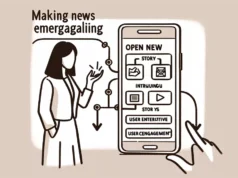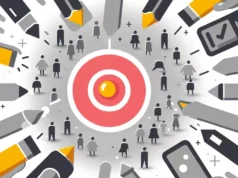The media landscape is currently undergoing significant changes, largely due to the emerging patterns and forms of digital consumption. One of these critical shifts is the way news publishers monetize their content. For years, ad models were the significant sources of revenue for many digital news publishers. However, in the light of new digital payment trends, microtransactions are challenging this once dominant revenue model.
The news industry’s ad-supported business model is under growing pressure due to myriad factors including the rise of ad-blocking technologies, increasing privacy concerns, and the supremacy of tech giants like Google and Facebook in the digital advertising market. These factors have significantly reduced ad revenue streams for many news publishers. As a result, publishers are seeking ways to diversify their income streams and lower dependence on traditional ad models.
Microtransactions are emerging as a viable alternative for publishers. This model allows users to pay small amounts, often a few cents or a dollar, to access specific pieces of content. Unlike the conventional subscription model, which requires users to pay a monthly or annual fee to access content, microtransactions give users the freedom to pay for the content they are interested in while bypassing the rest. This flexibility often appeals to users, particularly those who are reluctant to commit to full subscriptions.
The use of microtransactions has been popular in the gaming industry for several years. However, its application in the news industry is relatively recent. Blendle, a Dutch news platform, was one of the pioneers in using this system in the media industry. Users of Blendle can buy individual articles from various publishers for a small fee, usually between $0.20 to $0.89 per article.
The Nieman Journalism Lab at Harvard University, in studying the success of Blendle, noted that “this could be a way for publishers to get the ever elusive younger demographics to start paying for journalism.” Indeed, according to data from Blendle, the majority of their users are under 35, an age group traditionally hard for news publishers to monetize.
Notably, publishers using microtransactions often combine this model with other strategies like membership or subscription models. For instance, Winnipeg Free Press, a Canadian newspaper, has created a hybrid model. While non-subscribers can pay $0.27 per article, subscribers can access all content for a monthly fee of $16.99.
However, the transition into microtransactions isn’t without challenges. One of the key concerns publishers face is deciding the right price per article. Publishers have to strike a balance between charging a price that is affordable to its users and one that is sufficient to cover costs. Additionally, tech infrastructure becomes critical as these transactions need to be processed quickly and securely to provide a seamless user experience.
Cambridge University professor David Levy and Researcher Rasmus Kleis Nielsen in their research paper titled ‘The Changing Business of Journalism and its Implications for Democracy’ emphasized that new models of charging for content need to be flexible and user-friendly. The microtransaction model, when applied effectively, appears to meet these requirements.
Prashanth B Rao, a partner with services firm KPMG, elaborates on this, stating that “any pay model involving micropayment transactions needs to be coupled with a strong recommendation engine that identifies individual consumer preferences and provides the user with relevant, personalized news content”.
In the turbulent world of digital news media, where dependable revenue streams are often elusive, microtransactions offer a promising alternative to the traditional ad models. Understandably, their gradual uptake signals a significant shift in digital news revenue models. While it may take time to fully gauge the potential of this model, there’s little doubt that the emergence of microtransactions reflects an industry in transformation.
MERGING SOURCES:
1. ‘The future of micropayments: Will the public ever pay for online news’ by Melissa Suran, Columbia Journalism Review, 2017.
2. ‘Paying For Online News’ by David Levy & Rasmus Kleis Nielsen, The Changing Business of Journalism and its Implications for Democracy, 2010.
3. ‘Micropayments for news are great, but no silver bullet’ by Ricardo Bilton, Nieman Journalism Lab, 2015.
4. ‘Blendle: A radical experiment with micropayments in journalism, 365 days later’ by Alexander Klopping, Medium, 2015.
5. Utility.org: ‘Micropayments – what they are, and how they can help the IoT’, 2020.
6. ‘Exploring Micropayments for Monetizing Digital Content’ by Prashanth B Rao, KPMG.






